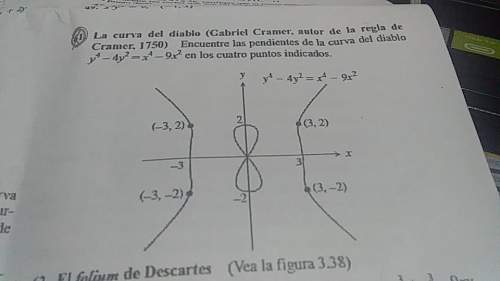
Mathematics, 15.12.2021 21:10 mgreenamb
hELP M Describe in detail how you would create a number line with the following points: 4, 1.25, the opposite of 3, and – (–2fraction of one-half). Please be sure to describe on which tick marks each point is plotted and how many tick marks are between each integer. It may help for you to draw this number line by hand on a sheet of paper first.

Answers: 3


Other questions on the subject: Mathematics

Mathematics, 21.06.2019 14:40, daymakenna3
In the diagram below, tan θ = sqrt 3. what is the value of m?
Answers: 3

Mathematics, 21.06.2019 17:30, samymaria1344
Lee has $1.75 in dimes and nickels. the number of nickels is 11 more than the number of dimes. how many of each coin does he have?
Answers: 1

Mathematics, 21.06.2019 21:30, kameronstebbins
High school seniors with strong academic records apply to the nation’s most selective colleges in greater numbers each year. because the number of slots remains relatively stable, some colleges reject more early applicants. suppose that for a recent admissions class, an ivy league college received 2851 applications for early admission. of this group, it admitted 1033 students early, rejected 854 outright, and deferred 964 to the regular admission pool for further consideration. in the past, this school has admitted 18% of the deferred early admission applicants during the regular admission process. counting the students admitted early and the students admitted during the regular admission process, the total class size was 2375. let e, r, and d represent the events that a student who applies for early admission is admitted early, rejected outright, or deferred to the regular admissions pool. suppose a student applies for early admission. what is the probability that the student will be admitted for early admission or be deferred and later admitted during the regular admission process?
Answers: 3

Mathematics, 21.06.2019 21:30, gonzalezashley152
In a test for esp (extrasensory perception), the experimenter looks at cards that are hidden from the subject. each card contains either a star, a circle, a wave, a cross or a square.(five shapes) as the experimenter looks at each of 20 cards in turn, the subject names the shape on the card. when the esp study described above discovers a subject whose performance appears to be better than guessing, the study continues at greater length. the experimenter looks at many cards bearing one of five shapes (star, square, circle, wave, and cross) in an order determined by random numbers. the subject cannot see the experimenter as he looks at each card in turn, in order to avoid any possible nonverbal clues. the answers of a subject who does not have esp should be independent observations, each with probability 1/5 of success. we record 1000 attempts. which of the following assumptions must be met in order to solve this problem? it's reasonable to assume normality 0.8(1000), 0.2(1000)%30 approximately normal 0.8(1000), 0.2(1000)% 10 approximately normal srs it is reasonable to assume the total number of cards is over 10,000 it is reasonable to assume the total number of cards is over 1000
Answers: 1
You know the right answer?
hELP M Describe in detail how you would create a number line with the following points: 4, 1.25, the...
Questions in other subjects:








Mathematics, 18.08.2020 17:01


Mathematics, 18.08.2020 17:01




